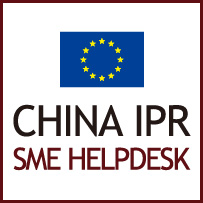Protection of Geographical Indications in China
Geographical indications (GIs) can act as a stamp of quality for products. This is particularly relevant in a market such as China’s where there is a need to bolster confidence in food and beverage products among an increasingly savvy consumer base that have concerns over food safety. These new consumers are more willing to spend a little extra for genuine, safe products, and a GI can also provide an indication of authenticity, a highly desirable quality. Reinout van Malenstein, IP Expert at the China IPR SME Helpdesk, explains the importance of GIs, and how they can, and should, be registered in China.
Champagne, Parma ham and Stilton cheese are all examples of products desired by both culinary experts and regular consumers. They have a certain quality, reputation or other characteristic influenced by the environmental or cultural conditions of the regions where they are produced. Therefore, their origins are usually stated on the product label. Such specific origins that create an association with a product’s quality, reputation or other characteristics are called geographical indications (GIs).
Geographical indications are protected by World Trade Organisation members, including all 28 European Union (EU) Member States and China. This protection is designed to avoid misleading consumers and to prevent unfair competition. Because a GI represents a product’s specific quality, reputation and consistent method of production many consumers prefer and are even willing to pay more for products with GIs.
The market for imported foods in China is already large and continues to grow. China is now the world’s fourth largest importer of food, and the food and grocery retail market is set to grow by 15 per cent every year. Along with this growth an increasing number of Chinese domestic consumers have concerns over food safety and the quality and origin of ingredients. If you intend to export products that come from a specific geographical region to China, obtaining a GI registration can provide the necessary proof of the product’s origin and can increase trust from domestic consumers. To take advantage of this, the following steps have to be taken:
- Contact your GI organisation.
- Urge your GI organisation to register the GI as a certification mark or as a collective mark in China.
- Register for GI protection in China at the General Administration of Quality Supervision, Inspection and Quarantine (AQSIQ).
- Enforce your rights.
How to Register a GI in China
In China GIs can be protected as an intellectual property right (IPR) under the Chinese Trademark Law as a collective or certificate mark, which provides the same level of legal and economic protection as for any other logo, name or mark registered as a trademark.
Alternatively, and in addition, the GI can be registered at the AQSIQ which monitors and manages the quality and standard of products offered in the Chinese market. Dual registration can ensure the GI is both protected as an IPR and acts as an indication of a certain level of quality assurance to the public.
Step 1 – Contact your GI organisation
Your GI organisation regulates your specific GI. For example, if your product is Bordeaux wine, you can contact the Bordeaux Wine Council. Check with your specific GI organisation if the GI that you use for your product is already registered in China. In case your GI is already protected in China, you can apply for a user permit at the GI organisation for your product. If not, proceed to Step 2.
Step 2 – Urge your GI organisation to register the GI as a certification mark or as a collective mark in China
Under the Chinese Trademark Law, GIs can be registered as certification marks or collective marks by the GI organisation of that region at the China Trademark Office (CTMO). As the Chinese Trademark Law only protects your GI if it is registered as a certification mark or as a collective mark, urge your GI organisation to register this mark as soon as possible. Registration gives you the best protection against copycat products that can mislead consumers.
Names or marks that can be registered as collective or certification marks include the name of the region of origin, or any other visual sign indicating that the goods originate from the region. However, if the chosen name or sign resembles country names, national or regional flags or national emblems, consent needs to be given by the relevant country’s government. It is also important to create a Chinese translation of your GI as this will be more acceptable and understandable to the Chinese domestic consumer. You can either choose a Chinese name which sounds like the original mark or one that has a similar meaning to the original mark.
Step 3 – Register for GI protection in China at the AQSIQ
In addition to registering as a trademark (collective or certificate), GIs can be registered at the AQSIQ by your GI organisation to provide an extra layer of protection with regards to the quality and standards of the product. Although it is not necessary to perform both registrations, this double approach will ensure that your GI will have the maximum possible protection in China.
We advise you to urge your GI organisation to try and register the GI with recommendations and supporting documents from your country’s ministry of agriculture and/or local government at the AQSIQ. Further information and a list of the documents required can be found in Article 10 of the Provisions for the Protection of Products of Geographical Indication.
Protection offered and enforcement of rights
Following registration, you can seek support for protection for your GI-covered products in China against illegitimate use of the mark including: acts of unauthorised use or forgery; use of the GI which violates the regulated standards of the GI-protected products; and use of words or logos that could lead consumers to mistake other products for those of a registered GI. Once you have identified an infringement of your rights, you can seek administrative enforcement support via the Administration of Industry and Commerce (AIC), the General Administration of Customs and other administrations, or you can enforce your rights through the China courts.
Enforcement of rights
Keep a close eye on the market. If you discover any illegitimate use of the GI inform your registering organisation as soon as possible. The first step in enforcement is to obtain notarised evidence of the infringement. Administrative measures can help stop the ongoing infringement of a GI and litigation can result in compensation. The plaintiff of a GI case must be the registrant of the GI mark or the certificate holder of the GI. Therefore the registering organisation must act on your behalf and in the interests of the whole organisation.
 The China IPR SME Helpdesk is a European Union co-funded project that provides free, practical, business advice relating to China IPR to European SMEs. To learn about any aspect of intellectual property rights in China, visit our online portal at www.china-iprhelpdesk.eu. For free expert advice on China IPR for your business, e-mail your questions to: question@china-iprhelpdesk.eu. You will receive a reply from one of the Helpdesk experts within three working days.
The China IPR SME Helpdesk is a European Union co-funded project that provides free, practical, business advice relating to China IPR to European SMEs. To learn about any aspect of intellectual property rights in China, visit our online portal at www.china-iprhelpdesk.eu. For free expert advice on China IPR for your business, e-mail your questions to: question@china-iprhelpdesk.eu. You will receive a reply from one of the Helpdesk experts within three working days.





Recent Comments